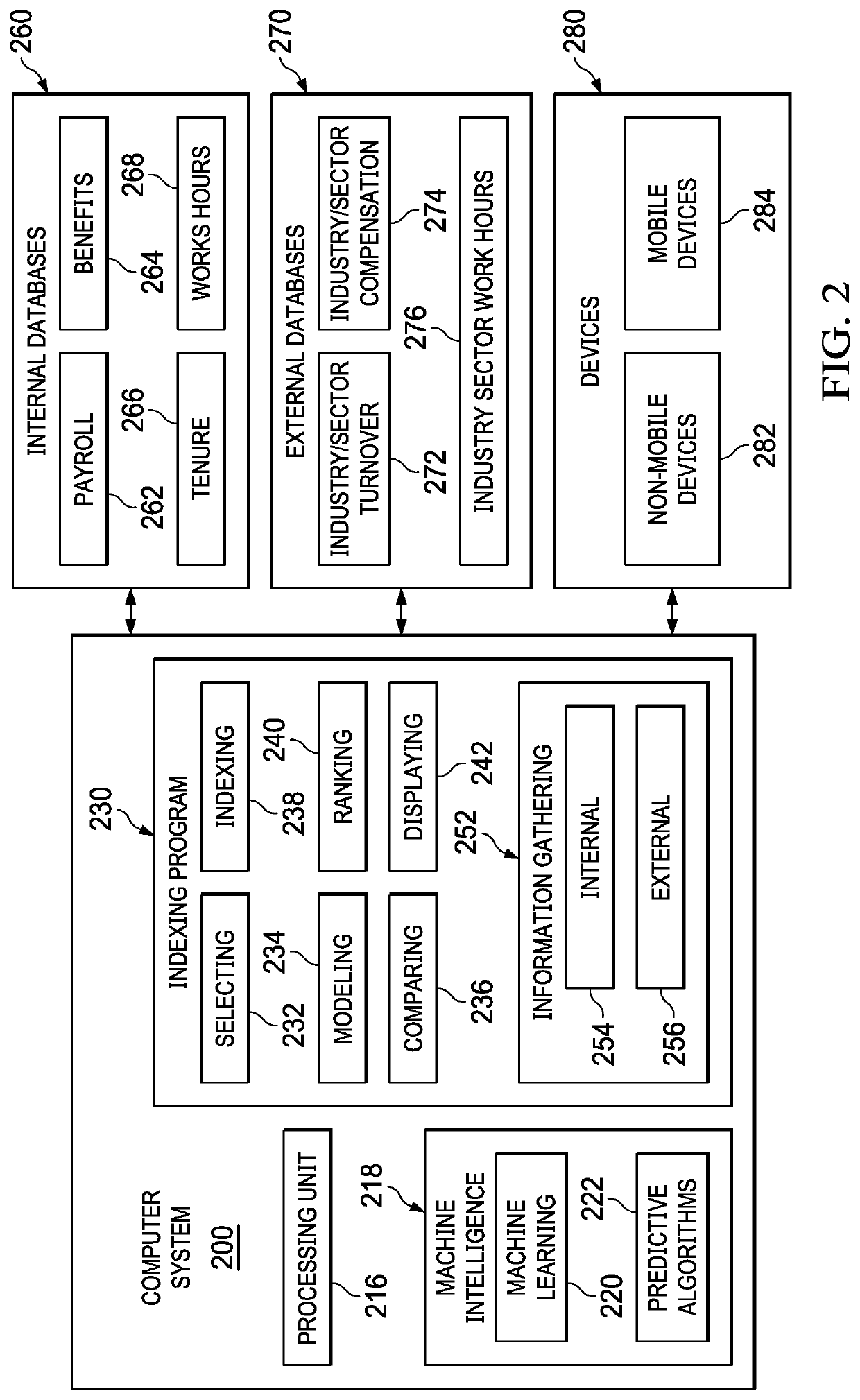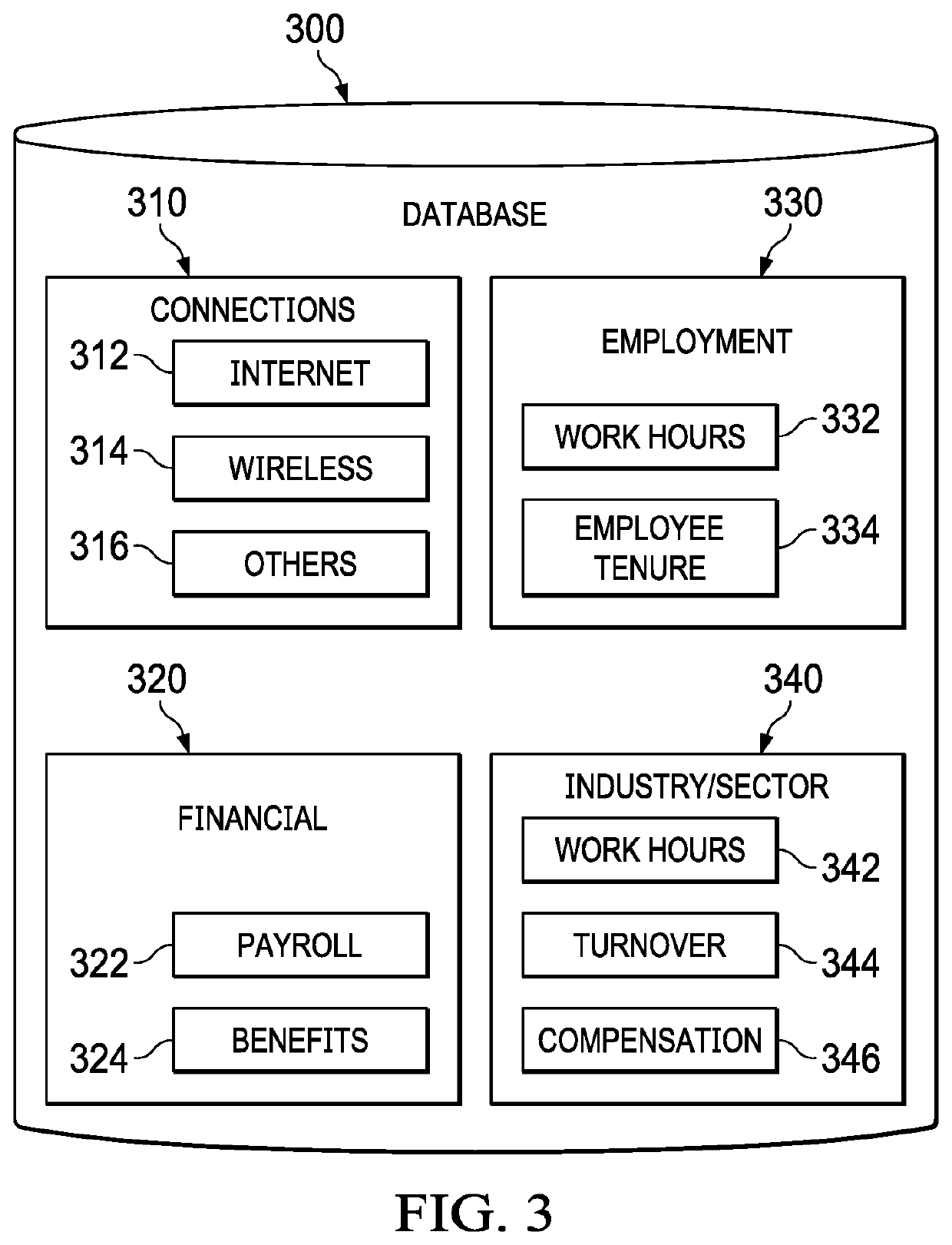Method and System for Predictive Modeling for Dynamically Scheduling Resource Allocation
a dynamic scheduling and resource allocation technology, applied in the field of computer systems, can solve the problems of increasing employee turnover, and not knowing their schedules more than a few days in advan
- Summary
- Abstract
- Description
- Claims
- Application Information
AI Technical Summary
Benefits of technology
Problems solved by technology
Method used
Image
Examples
Embodiment Construction
[0018]The illustrative embodiments recognize and take into account one or more different considerations. For example, the illustrative embodiments recognize and take into account that dynamic scheduling can reduce costs by adjusting work hours and resource utilization with changes in momentary demand.
[0019]The illustrative embodiments further recognize and take into account that the unpredictability of work schedules can have a negative effect on employee retention. Often increased employee compensation in the form of salary and / or benefits is necessary to retain employees who work under dynamic scheduling. However, the increased costs of this increased compensation can potentially offset the reduced costs of lower employee attrition.
[0020]Thus, a method and apparatus that would allow for accurately predicting the optimal balance of dynamic scheduling, employee compensation, and employee retention would fill a long-felt need in the field of business management and employee benefits ...
PUM
 Login to View More
Login to View More Abstract
Description
Claims
Application Information
 Login to View More
Login to View More - R&D
- Intellectual Property
- Life Sciences
- Materials
- Tech Scout
- Unparalleled Data Quality
- Higher Quality Content
- 60% Fewer Hallucinations
Browse by: Latest US Patents, China's latest patents, Technical Efficacy Thesaurus, Application Domain, Technology Topic, Popular Technical Reports.
© 2025 PatSnap. All rights reserved.Legal|Privacy policy|Modern Slavery Act Transparency Statement|Sitemap|About US| Contact US: help@patsnap.com



